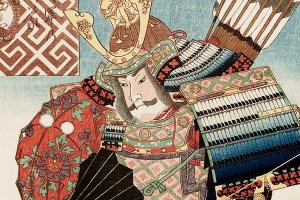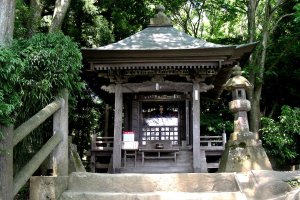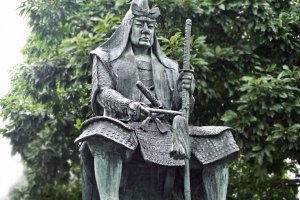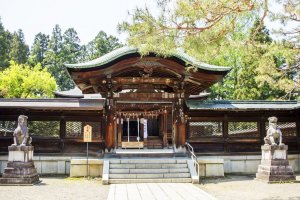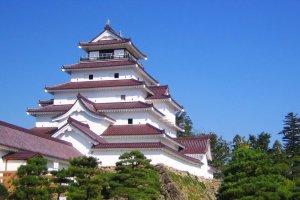In the Tohoku region, you can visit three places that recall three different influential periods in Japanese history: Kamakura (1185-1333), Sengoku (1467-1615) and Bakumatsu (1853-1869).
Each of these periods reflects a national turning point. At the beginning of the Kamakura period, the first military shogunate government was created. At the end of the Sengoku 'Warring States' period, the country marked the victory of the Tokugawa clan, completing the unification of Japan. The brief Bakumatsu period was the end of the shogunate's rule and saw the replacement of the samurai class by a Western-inspired military. Each period saw people who became legends and who were distinguished by their devotion, through which they suffered and eventually meeting death with honor.
1. Hiraizumi
The city of Hiraizumi is associated with Minamoto no Yoshitsune, the half-brother of Minamoto no Yoritomo, founder of the first shogunate. Yoshitsune took refuge with the head of the Fujiwara clan in his youth when he fled Kurama-dera temple. At the time, Hiraizumi and Oshu – Fujiwara's domain - were flourishing and could even compete with the capital of Heian (Kyoto). As he got older, Yoshitsune decided to meet with his brother and fully support him. Yoritomo used Yoshitsune as a talented warrior and tactician.
In March 1185, Yoshitsune went on a campaign against the long-time enemy of their Genji (Minamoto) Clan - Heike (Taira) Clan. In the decisive battle of Dannoura, Yoshitsune used unexpected tactics to defeat the Heike fleet in a single day. The Battle of Dannoura put an end to the dominance of the Heike clan and is considered one of the most significant in the history of Japan.
After this brilliant victory, Yoshitsune's fate turned out tragically. Seeeing his brother as a competitor, Yoritomo ordered his capture and death. Yoshitsune escaped to Hiraizumi with a small group of loyal vassals and was sheltered and treated like a son by one Fujiwara no Hidehira. However, he soon died, and Yoshistune was betrayed Hidehara's son who organized a surprise attack, killing his vassals. Yoshitsune then committed seppuku in 1189, at the age of 30. In Hiraizumi, at the site of Yoshitsune's death, lies the small temple of Takadachi Gikeido.

2. Yonezawa

In the small town of Yonezawa there are many places associated with the Uesugi Clan. Uesugi Kenshin, whose slogan was 'Justice', is a legend. Kenshin decided to devote his life to the cause of justice, fighting only to administer it. Unlike his rivals Takeda Shingen and Oda Nobunaga, Kenshin was never keen to conquer all of Japan. All he sought was peace and prosperity in his lands.

Although there is a monument to Kenshin there, Yonezawa is most associated with his successor Uesugi Kagekatsu and counselor Naoe Kanetsugu. The Uesugi were exiled to Yonezawa after the Battle of Sekigahara in 1600, with the clan suffering for its loyalty to the losing cause.

3. Aizu-Wakamatsu

The Aizu Clan was famous for its loyalty and fortitude, but the shogunate era was coming to an end. The young Emperor Meiji had decided to make Japan a modern country and the clan resisted this new openness; the Aizu were one of the last samurai clans to fall fighting for the traditional way of life. The city honors the memory of their ‘Byakkotai’ (‘White Tiger’) fighting detachment.
The Byakkotai detachment went into battle last because of youth and inexperience. Retreating, they became lost in the surrounding forest, coming out on to Mount Iimoriyama. Seeing the city and Tsuruga Castle in fire and smoke, they decided that the war was lost. Wanting to die with dignity, as they were taught, the young samurai committed seppuku. It was a fatal mistake – the castle had not yet fallen and the Aizu clan were still defending themselves.

Later, permission was obtained for the burial of young Byakkotai warriors. A memorial and museum have been made on Mount Iimoriyama, the place of their death. The residents of Aizu restored the damaged Tsuruga-jo castle while in September, a three-day festival takes place in Aizu-Wakamatsu.


